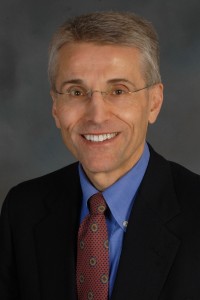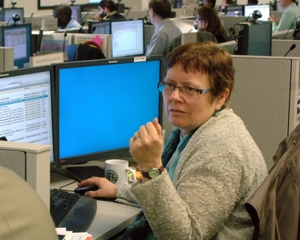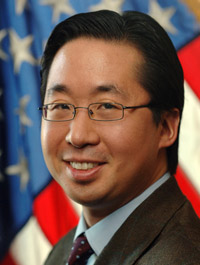FDA Voice: FDA has embarked on an exciting collaboration with the Defense Advanced Research Projects Agency (DARPA) and NIH—to develop a groundbreaking tool that could help bring new treatments to patients faster, more cheaply, and more safely. Can you talk about this new technology?
 Dr. Goodman: Yes, it’s what we’re calling Human on a Chip. This is an ambitious project to create a tool that could revolutionize toxicology testing and it’s something I’m really excited to talk about. Scientists have relied largely on animal studies to determine if a drug is toxic before testing it in humans. And while animal testing is useful, it’s also expensive, time consuming, and has drawbacks. For example, it doesn’t always detect toxic effects specific to humans and doesn’t usually provide information about the role that genetic differences within human populations play in toxicity. It can also generate false alarms, showing an effect in animals that doesn’t predict an actual effect in people, which leads us to abandon promising new drugs. FDA is collaborating with DARPA, NIH, and the scientific community to spur innovation in this field by exploring how tools like Human on a Chip can be integrated into our development tool box to improve testing for toxicity and potentially reduce the need for animal testing.
Dr. Goodman: Yes, it’s what we’re calling Human on a Chip. This is an ambitious project to create a tool that could revolutionize toxicology testing and it’s something I’m really excited to talk about. Scientists have relied largely on animal studies to determine if a drug is toxic before testing it in humans. And while animal testing is useful, it’s also expensive, time consuming, and has drawbacks. For example, it doesn’t always detect toxic effects specific to humans and doesn’t usually provide information about the role that genetic differences within human populations play in toxicity. It can also generate false alarms, showing an effect in animals that doesn’t predict an actual effect in people, which leads us to abandon promising new drugs. FDA is collaborating with DARPA, NIH, and the scientific community to spur innovation in this field by exploring how tools like Human on a Chip can be integrated into our development tool box to improve testing for toxicity and potentially reduce the need for animal testing.
FDA Voice: Can you describe Human on a Chip?
Dr. Goodman: Researchers are developing microsystems using human cells to test the effects of drugs or other substances. For example, scientists have developed a micro machine chip with human lung cells that grow on a surface to form a lung-like tissue that has both air spaces and blood circulation. FDA is supporting the coupling of this chip to a heart-like chip that beats and pumps blood. We can use this type of system to evaluate, with human cells, how specialized organs like the lung and heart react to a specific chemical.
The Human on a Chip builds on this approach. FDA’s collaboration with NIH and DARPA aims to create a 3D representation of 10 different human organ systems that mimic the processes and activities of those systems, potentially linking them to form a system with major features of human biology. For instance, in a living human, the interactions of heart, lung, kidney, and liver are crucial in the functioning of all 4 organs, and all are common targets of toxicity. A tool that creates and links organ-like systems will enable scientists to observe a substance’s effects on several interacting systems simultaneously. This can make it possible to test for beneficial effects as well as for toxicity.
Once these systems are refined, if successful, they could not only improve testing beyond currently available tools, but could also be engineered to mimic disease states or be implanted with cells with a specific genetic background that is involved in specific diseases or drug interactions.
FDA Voice: Why transform toxicology testing?
Dr. Goodman: Toxicity has been a major challenge in medical product development and in assessing environmental hazards. Technologies like Human on a Chip could help shrink the time frame it takes for new treatments to move to human testing and approval. These new tools can help identify toxicity earlier in product development, thus protecting patients, lowering development costs, and speeding new treatments to patients in need.
Human on a Chip could also contribute to developing medical countermeasures because the diseases and conditions we might need to treat in a public health emergency—like anthrax, smallpox, pandemic influenza, and radiation and toxin exposure—rarely occur naturally, often making animal models the only available tools for evaluating a new treatment’s effectiveness.
FDA Voice: What makes FDA essential to this collaboration?
Dr. Goodman: Our FDA scientists have vast experience using available tools to make tough scientific decisions about the safety and effectiveness of a multitude of products. They’ve seen what works and what doesn’t, and thus can provide insights and help solve challenges in defining how best to develop and evaluate new tools. Before accepting a new tool for use, FDA scientists must have the needed scientific data on how it performs to ensure that it is as safe and effective as possible. Once FDA accepts a scientific tool, industry can use it for its qualified purpose during product development.
FDA Voice: In what other ways has FDA worked to drive innovation in toxicology testing?
Through the Critical Path and Advancing Regulatory Science initiatives, we are working to harness the use of new science and technology to transform regulatory science and help get needed products to people quickly and safely. FDA identified transforming toxicology as one of the eight priority areas where collaborative regulatory science research is essential and offers huge opportunities. In addition to Human on a Chip, FDA is collaborating with other Federal agencies, academia, and industry to bring new science to toxicology, such as on the cell-based Tox-21 project with EPA and NIH, and on FDA grants to evaluate cell-based approaches to evaluate risks of reproductive and developmental toxicity.
My office has also formed a new FDA-wide council, together with scientists from across the agency, to explore, promote, and coordinate efforts concerning chemical and toxicology-related issues. FDA’s partnership throughout the development and evaluation cycle is critical to ensuring that exciting new tools and approaches like Human on a chip speed the delivery of safe and effective new treatments to people who need them.
Jesse L. Goodman, M.D., M.P.H., is FDA’s Chief Scientist and Deputy Commissioner for Science and Public Health







